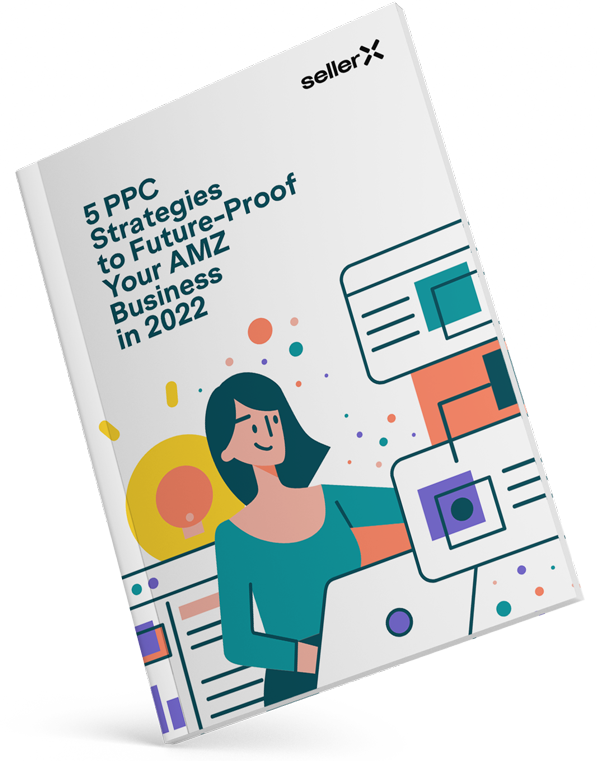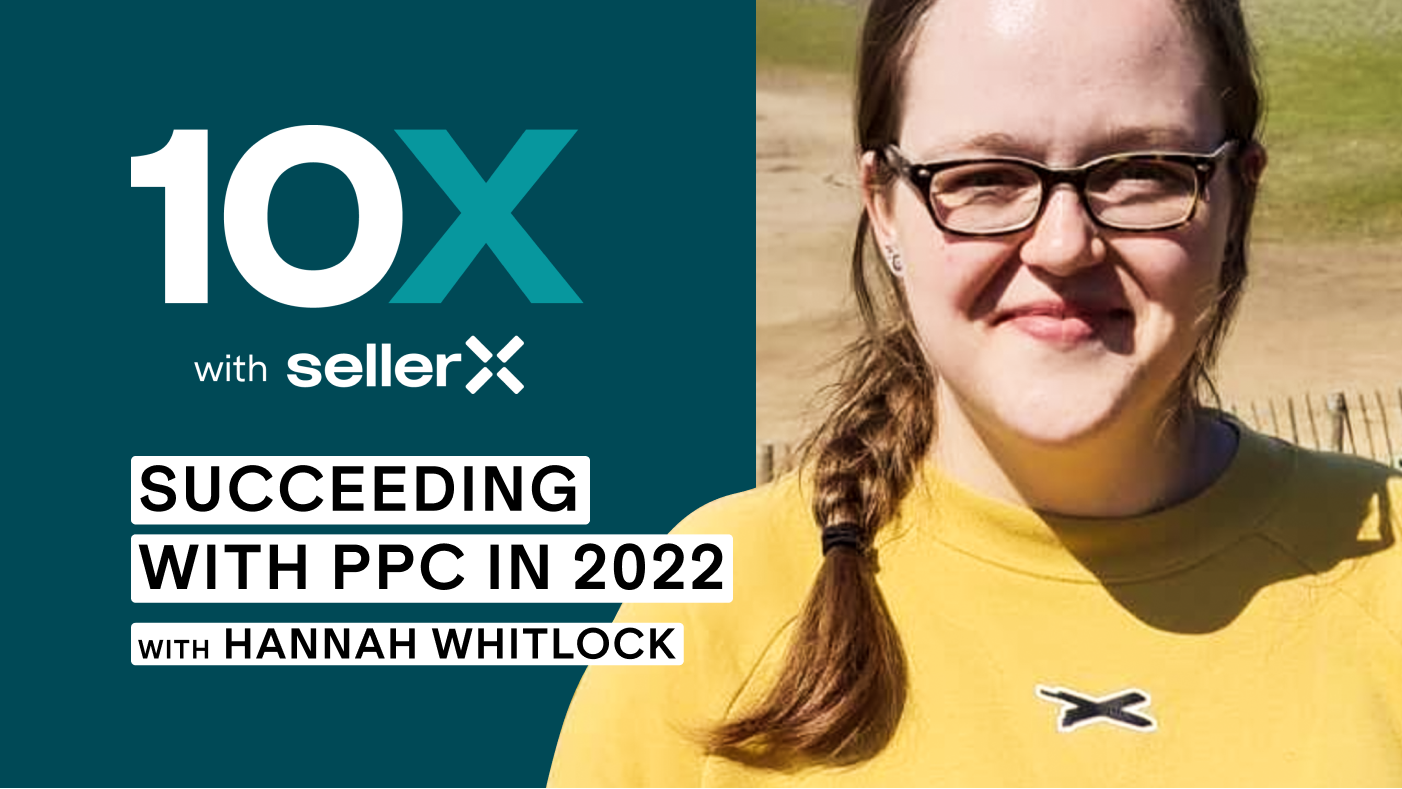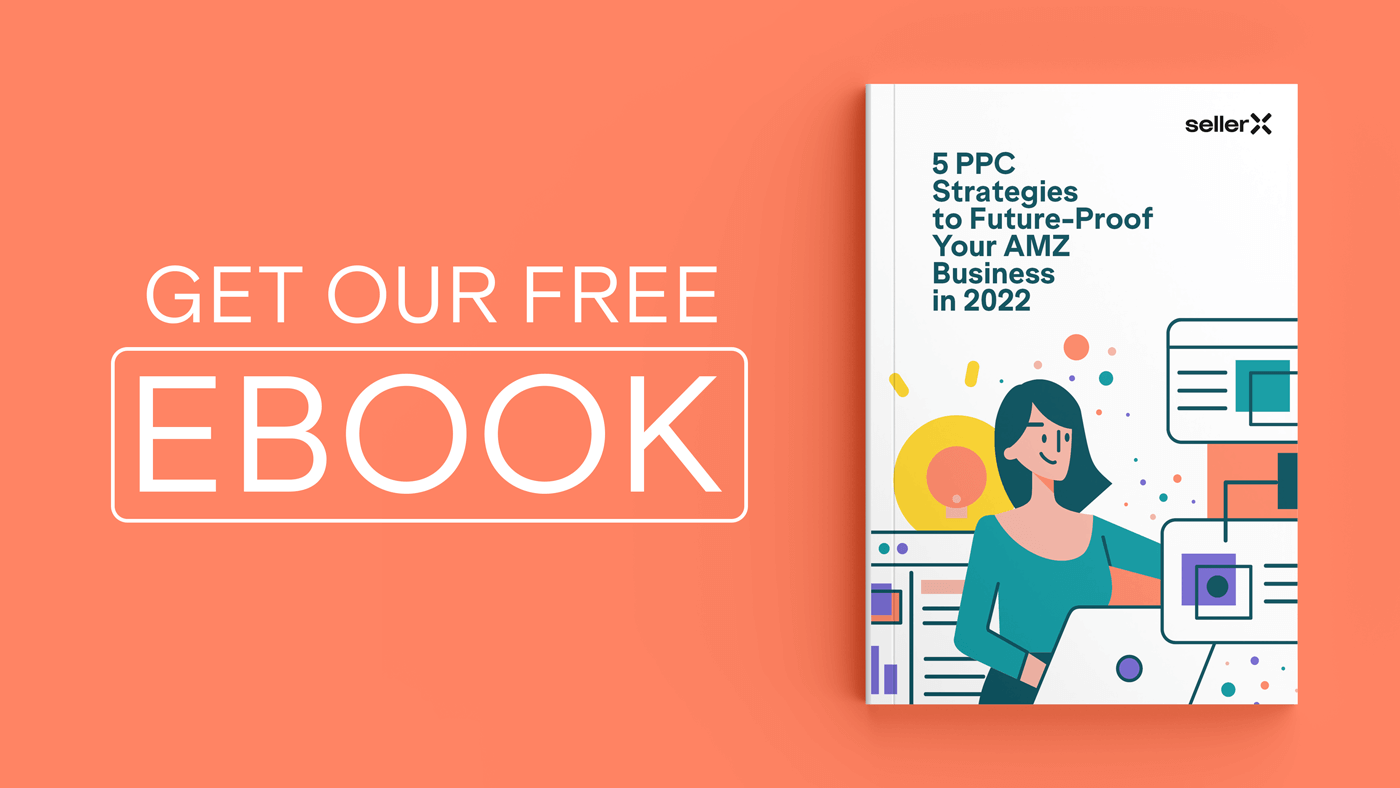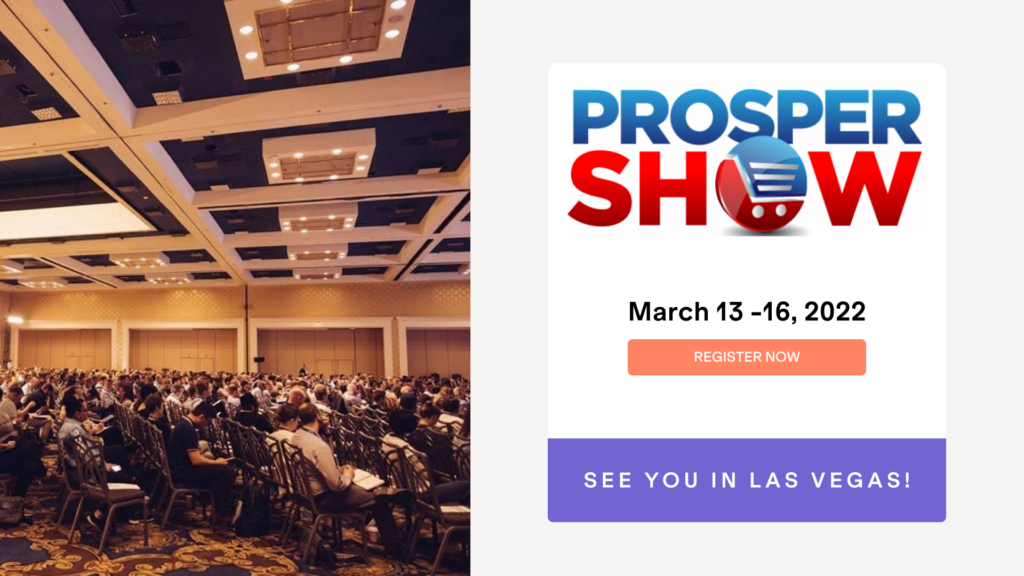SellerX’s PPC expert shares product launch tips and advanced ad strategies you need to be implementing in 2022
What are the PPC strategies the top sellers are using? How does your budget allocation need to change to stay competitive?
In this short webinar, Margaret Jolly, co-founder of India Sourcing Network, asks Hannah Whitlock, SellerX’s resident PPC specialist, the biggest questions ambitious sellers have.
Listen to the webinar to learn:
- How to use PPC to maximize sales during your product launch
- Why you need to take advantage of all Amazon’s ad campaign types and features
- Tips on advanced strategies like day-parting
Jump to
00:00 An intro to Hannah and SellerX
01:00 Optimizing PPC during your “honeymoon period”
02:50 The importance of using Amazon’s full range of campaigns and ad features
04:15 Where automatic campaigns fit into your strategy
05:20 Optimizing PPC campaigns based on your business goals
06:50 Playing with keywords on your listing
07:50 Staying competitive with advanced strategies, like off-AMZ advertising
09:15 Why day-parting is more effective in 2022
11:15 What to do when keywords aren’t working
13:45 Why single keyword campaigns are crucial

Like what you hear?
Get more insider PPC strategies to level up your AMZ game in our free downloadable guide.
Margaret:
Hello and welcome to another 10X With SellerX session. And
today we’re talking about succeeding with PPC in 2022. I have with me today Hannah Whitlock, a resident PPC expert at SellerX, who is the leading European aggregator for ECom businesses. Now she’s going to share with us some of the tips and strategies she uses working on the brands that SellerX has acquired. So thank you for joining us, Hannah. And would you like to tell us a little bit about yourself and your role at SellerX Place?
Hannah:
Thank you. So yeah, so I’m part of the PPC advertising team
here. So we work with lots of different brands helping build and scale their PPC strategies. So very exciting.
Margaret:
Yeah, it would be a challenge. And I said to Hannah before we started recording, It’s my least favorite thing on Amazon, and I think she needs a medal for doing it, but she loves it, which is really great. So look,
the first question I’ve got for you is, you know, how does SellerX use PPC to launch a product to give it maximum impact?
Hannah:
Yeah. No, of course. And I think that when someone’s
launching a product, it’s really, really important that there’s a big strategy behind it or a decent strategy. And when you’re launching for the first two weeks, obviously, as you’ll know, you’ve got the honeymoon period. So for us, it’s really imperative that you ensure a product’s completely optimized before the launch. So all of your backend keywords, your imagery, your A-plus content, you basically want to be putting your best foot forward. So what we’d say is we wouldn’t expect you to make any sort of profit off your product for the first couple of months. I know that’s a bit of a difficult one to hear, but Amazon is
very much pay-to-play. We need to be investing upfront in our products. So the main goal for the first month at least should be increasing your ranking in increasing your sales velocity. And what this means is you’re going to be looking at a higher TACOS for the first few months and you want to be priced as competitively as you can. So look around Amazon, see what price everyone else is and try and you know, obviously sometimes it’s not possible, but being as competitive as possible in those first couple of weeks especially is really, really important. So honeymoon period, take full use of it because you won’t get another chance like that to really boost your product as easily. So advertise like crazy and just make sure you’re fully optimized before you even launch.
Margaret:
Yeah. And I think a lot of people do fall into that trap and
they think, “oh, look, I’ll just get it up and I’ll worry about it down the
track.” And by then the gate’s shut and it’s too late. You don’t get to come
back and have another go at it, really. So what sort of campaign types do you
believe people should set up when they first start?
Hannah:
Obviously sponsored products is the main campaign type that
people are going with? I think it’s like 70% of Amazon is all sponsored
products. I would be advising utilizing all of Amazon’s real estate. So your sponsored products, sponsored brands, including video and sponsored display, especially Amazon are pushing for the sponsored brands and the sponsored display at the moment. So people are really being rewarded for using this sort of ad type, but, you know, different match types in their own campaigns. So if you’ve got broad, phrase, exact, I tend to only use broad and exact. A lot of people disagree with me. Some people love phrase match. I just don’t.
I would put them all in their own separate campaigns. They
all have different functions. And what we see a lot of the time is people come to us with sponsored products only, with all the match types mixed in, hundreds of different keywords in one campaign, and it’s just a mess. So try out all of Amazon’s real estate. Make sure you’re putting, you know, 5 to 10 keywords or competitors maximum in a campaign, make sure it’s only one match type. So broad, phrase, or exact. And it just makes it very easy when you’re going through and optimizing to see what’s actually working and where your sales are coming from.
So utilize all of the real estate. That’s what it’s there for.
Margaret:
Okay, look, some people to say you should just start with
automatic and decide where to go from there. You don’t obviously use that at all. No.
Hannah:
I use automatic campaigns. So if we’re being very, very
basic, what I’d probably set up is an automatic campaign, a broad match
campaign, an exact match campaign and the competitor because, you know, the auto and the broad will be doing a lot of keyword research for you as well. So it’s really important that you are utilizing those match types because you’ll find out how customers are searching for your product, which is equally as important because sometimes you do keyword research and you just, you miss out on other keywords which actually would convert for you really, really well. So you can start with automatic and see where to go from there and then add those in
to exact and broad match campaigns. But it just depends on your budget as well.
Margaret:
Yeah. And I suppose when you’ve only got that short
honeymoon period, you haven’t got time to be spending too long just collecting data off an automatic because you, you’ve lost a lot of time haven’t you. In, in that short space. They don’t give you long enough, you need a little bit longer. We always want more time being honest. Yeah. So look at how do you optimize your campaigns, how do you go about that? What’s your process?
Hannah:
So obviously it depends. You know, if you’ve just launched a
campaign, you’re going to be looking in a lot more often than you are for a well-established campaign. Generally, I’ve got SOPs for weekly check-ins and then a monthly check-ins as well does depend on your target. So one thing you need to keep very front and center in your mind is what are my business goals? You know, am I looking to increase sales? Am I looking to optimize my TACOS or my ACOS? You know, what is it you’re actually… Because if you’re looking to have a target, a cost of 40%, and all your campaigns are running at 30%, you need to be increasing your advertising. If you’re at 60 and you need to be at 40, you’re going to need to be decreasing. So it’s very much based on your goals. Define them early. But I’d focus mainly on TACOS as well. I know a lot of people are quite focused on their TACOS, but for profitability, TACOS is really the one to go for and your ad sales should be influencing your organic sales. So it just depends. But you know, don’t over optimize as well. I’d say no more than once a week unless they’re brand new campaigns. You need to let Amazon get the data because you know, you can’t really be optimizing off one or two weeks worth of
data. You really want, you know, a month’s worth. But then again, obviously checking in weekly to make sure that nothing’s running away with itself. Nothing’s overspending, nothing’s too high a TACOS.
Margaret:
So how often then would you say people should maybe change
some of the words in their title or something? How often would you recommend that?
Hannah:
On the actual listing?
Margaret:
Yeah.
Hannah:
That’s an interesting one. And I think that, you know, one
thing we’ve noticed is actually shifting around your words and the title kind of gives you a bit of a boost with the algorithm sometimes. So it depends what your goals are. If you’re going for a very specific keyword on PPC and that’s not in your title or it’s not towards the front of your title or in your bullet points, then I’d be doing it, you know, maybe every couple of weeks, just switching it around and playing around with it and seeing what works. I mean, Amazon is just testing. That’s all we’re doing on Amazon. We don’t really know the right answer 100% of the time, do we? We’ve just got to test.
Margaret:
And see what happens. It’s a bit of a wait and see game,
isn’t it? And look, Amazon is getting more and more competitive and it’s
getting harder to stand out, you know? What are some of your advanced
strategies that sellers can be using now? What are your secret tips?
Hannah:
So we’ve got a document coming out about this soon anyway so
people can keep their eyes peeled for this. But I think one of the major things that we’re focusing on at the moment is driving external traffic to Amazon. So Amazon is doing everything it can to kind of claw people back from their own websites, their own social media, Shopify. So utilizing Google and Instagram to send traffic through the attribution links, this is what the top sellers are doing at the moment, and we’ve noticed a lot of our competitors becoming more aggressive and more successful with these sorts of strategies around us. So we’ve had to kind of adapt and make sure that we’re keeping up with this as
well. If you’re rank, if your top keyword is, say, I don’t know, “wine glass”, then you’re going to want to utilize Google maybe to kind of send wine glass traffic to Amazon. It’s just becoming more and more apparent that Amazon is rewarding sellers who were driving that traffic back to Amazon. And then another thing that we do cover in this, which I’ve kind of been a bit controversial on in the past, I think is dayparting. So obviously dayparting can be a really interesting strategy where you’re only advertising at certain hours of the day or certain days of the week. And previously I felt like because we didn’t have day or hourly data from Amazon, you couldn’t really accurately create a dayparting strategy that I felt was effective enough. We are now getting more of this data from Amazon, so it’s another interesting strategy to look into in 2022, and I think a lot of the top sellers will probably be using dayparting in some sense, and a lot of softwares are now introducing day partying into their offering as well. So it’s definitely something, especially if you’re on a shorter budget and you want to kind of control when you’re spending, that might be a really interesting strategy for people to look into.
Margaret:
And so, you wouldn’t sort of say you just wait till the end of the day when everyone’s running out of money. It’s a bit more deeper theory
than that.
Hannah:
I think so. And it’s interesting because some people say that it’s, you know, between nine and five are the best hours for conversions. So you should be spending all your money when the conversion rates are the
best. And that makes a lot of sense. And a lot of people say, well, you should wait till the end of the day when everyone else has spent their advertising budget. Yeah, and these are all good points. And I think the only way to know what works for your product is to test it. But obviously the more data we get from Amazon and the more we’re able to test these sorts of things, the more effective individual strategies will become. But I’d say to people, don’t just say, okay, well, we’re only going to run ads between nine and five because for your product that might not be the best. So it’s about testing and seeing what
works, but that’s why PPC so fun.
Margaret:
I don’t agree. It’s definitely not fun for me. No. And I
think too I mean Amazon’s never going to give you the really, really, good juicy data that you need because…
Hannah:
… it’s not in their best interest.
Margaret:
Yeah. Take the fun out of their side of it won’t it. So look I’ve just got a question for you that runs around a lot with people I talk to is when you are looking at some keywords that maybe aren’t working for you, should you just delete them? Should you pause them? Should you just put the bid down to a few cents? What is your belief in all that?
Hannah:
It’s difficult. It depends what your goals are. Obviously,
it depends how relevant that keyword is as well. I mean, with super relevant keywords, I would always just say keep them. It depends how relevant because Amazon is moving more towards a system of relevancy. So a keyword that may have converted for you but isn’t extremely relevant might actually be harming your campaign in a certain way. If a keyword is not working, get rid of it, you know, but give it a certain amount of clicks first. So I would always say that I would determine a keyword’s not working – in general, you know, it changes – if you’ve had 30 clicks and no sale, that keyword isn’t working for you. Yeah, but then I suppose it depends on the price of the product as well. Because you say that every ten clicks roughly should be a sale. But if this is something that costs $100 and you’re paying 50 per click, then you can afford to have 50, 100 clicks, something like that.
Whereas if it’s a £10 product, you need it to be a little
bit more efficient. So, you know, look at it and see how efficient it’s been
for you. But don’t discount a good keyword, especially if you’ve got like a higher price product just because it hasn’t converted after ten sales. You need to give keywords enough budget and enough time. And that’s why it’s important to when you’re starting out, don’t have too many keywords, don’t stuff a million keywords in your campaign just to see which ones are going to work. You know, have quite, you know, small campaigns where all the keywords get enough chance to have, you know, spend and clicks and then you can kind of optimize and see what’s working for you. But this is the problem. You know, if you’ve
got 300 keywords in a campaign and every keyword is getting, you know, $50 or $0.50 here or there, you’re never going to work out which keyword’s best.
Margaret:
And I suppose too, if you have some really, I suppose the
most popular or your most predominant keywords and some half-baked ones at the bottom, know they’re never going to get a chance, are they? Because all of the budget’s going to go on are your main keywords. So I think should you have like your maybe the keywords in your title more in one campaign and then the low hanging fruit or the long tail keywords in a separate campaign? You shouldn’t mix those up or not?
Hannah:
Definitely? I’m a big fan of single keyword campaigns, so my main keywords always in their own campaigns, especially because they spend more, you know, especially if they’re high search volume. If you put them in a campaign with some longer tail keywords, they just suck all the budget. There’s no hope for the other keywords. So putting them in their own campaign allows you to control that keyword very specifically: how much you spend, what the ACOS is. But it also gives all your other keywords a fighting chance in the other campaigns. So, I mean, if you want to be really specific, I’d have single keyword campaigns, then other campaigns with like 5 to 10 keywords maximum, and that’s the way I would structure it. But main keywords, especially the ones you want to rank for – always in their own campaign.
Margaret:
Oh, wow, that’s fantastic. Look, that’s so much great information, Hannah. I’m sure everyone will have really learnt a lot from that and I thank you for taking the time out of your day. No doubt you’re busy. I
can imagine how many campaigns you work on in a day. So it’s been really good information from you and you know, from like being with SellerX, it’s obvious you’re dealing with a lot of really big budgets and something that’s not just a small person’s PPC, but still the same tips would apply, whether it be a large business or just one or two products. So I think it’s really, really good. So look, guys, watch out for some more information from SellerX series during the month. There’ll be lots more tips and tricks from the experts at SellerX to give you some more hints and give you a competitive edge in running your business. Okay. Thank you very much.
Hannah:
Thank you. Have a good day.
Margaret:
Thank you. Bye.



